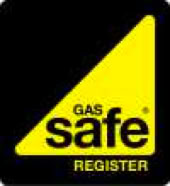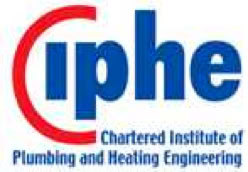
Mike the Boilerman -
Gas Safe Registered boiler and central heating repair technician in west Berkshire

Mike the Boilerman -
Gas Safe Registered boiler and central heating repair technician in west Berkshire
If your Johnson and Starley warm air boiler has stopped working, I have a large stock of spares for the older but very popular older models from the 70s, 80s and 90s. I can often repair one in a single visit. Call or text me for more information on 07866 766364.
Most frequently I fix the J25-32 and the Hi-Spec J32, but most of the older models can still be repaired, as can all the current models such as the “Warmcair”.
Things to check if your older J&S warm air boiler won’t work:
1) Check the pilot flame is alight. (See my page on how to light the pilot.)
2) Check the room thermostat is turned UP. I get calls from time to time where this turns out to be the only reason for the boiler not working, so find and check your room thermostat before calling anyone out.
3) Check the heating is set to ON, on the time switch or programmer.
There aren’t really any other things the user can check or adjust so if these checks make no difference you’ll need to call someone out, and you can be confident you haven’t overlooked something trivial. You can call Johnson and Starley themselves for the name of a local boiler technician or I can visit if you’re within travelling distance. Call or text me for information on 07866 766364.
Common faults and fixes:
Thermocouple failure:
The thermocouple is the little metal rod that the pilot light flame plays on. The flame warms it up, a semiconductor junction inside the tip of the rod generates a voltage and causes a current to flow in a coil in the gas control valve. This coil generates a magnetic field which holds a spring-loaded valve open, supplying gas to the pilot light. It is a safety Device. If the pilot flame is extinguished for any reason, thermocouple cools down, the current flow stops, the magnetic field vanishes so the valve is no longer held open against the spring, and the spring closes the valve to shut off the gas. When the thermocouple fails it stops producing the current even though the pilot flame is still burning, causing the valve to close anyway and extinguish the flame. On the user re-lighting the pilot flame, it goes out again as soon as they release the override button. A new thermocouple is cheap to buy and (usually) quick to fit
Gas control valve failure
Occasionally the coil in the pilot light control valve section fails, creating identical symptoms to the thermocouple failure above, except in this case the pilot will still not stay alight even with a new thermocouple. The coil can be tested for continuity using a multi-meter. If open circuit a new gas control valve is needed. Sometimes obsolete, depending on the exact model.
Fan failure
The fan the distributes warm air around the house or flat fails. The bearings in the motor grow stiff with age and dust and the fan will no longer rotate. Sometimes accompanied by a loud and fearsome screeching noise just prior to failure The bearings are self-lubricating sintered bronze and if oiled, the fan will run again but the oil quickly collects more dust and further failure will occur rapidly. A new motor or new fan is required. Whole new fans are available from Johnson and Starley, or there are several firms who will replace just the motor if the whole fan is posted to them.
Fan speed controller failure
Only the Modairflow versions have a fan speed controller. Failure manifests itself in either no power being sent to the fan at all, or random operation of the fan at various speeds bearing no relation to the temperature of the house. Hard to diagnose as similar symptoms can occur when the electronics panel fails. The easiest way I find is to fit a new fan speed controller from stock and see whether the fault disappears or persists. Not possible for someone not carrying a stock of spares though.
Electronics panel failure
Similar symptoms to fan speed controller failure above. Similarly to above, fitting a new one is the quickest method of diagnosis to see if the fault disappears. Occasionally both the fan speed controller and the electronics panel both fail together - expensive!
Leaking flue
One of the four statutory safety checks for gas appliances is checking the integrity of the flue or chimney system. The vertical flue pipe on a warm air unit is tested for integrity by lighting a smoke pellet in the combustion chamber. The pellet produces half a cubic metre of dense white smoke whilst it is burning, ALL of which should pass up the flue to outside. Whilst the pellet is burning the path of the flue is visually inspected for smoke escaping. Smoke will escape through any leak or hole in the in the flue pipe demonstrating that flue gas can escape too. Any holes or leaks must be repaired on the spot, or the boiler classified as “Immediately Dangerous” and not used until the leak has been repaired.
The most common flue leak is in the loft where the flue exits the building via a specially designed ‘ridge tile’ incorporating a flue terminal. The loft fills with smoke during the flue test. Sometimes easy to fix, but occasionally difficult and time consuming to repair if ridge tile parts are missing or access to the ridge tile inside the loft is difficult.
If you would like me to repair or service your Johnson and Starley boiler, contact me on 07866 766364.
There is a wider discussion of warm air boilers in general on my warm air heating page.
My general description of a boiler usually comes first but in this case I’ve moved it to the bottom of the page, here:
The J25-32 is the boiler which made Johnson and Starley the market leaders in warm air heating systems back in the 1960s and 1970s. It was so successful and long-lived that my guess is that 50% of all warm air boilers in use today are this model.
The J25-32 is a tall, thin boiler which draws air in from the hallway of a house or flat, warms it up and has large quiet fan to blow it out through warm air vents in the wall , ceiling or floor of each room intended to be heated. These vents are connected to the boiler by metal ducts conceded within the structure of the house/flat. The fan is turned ON and OFF by a room thermostat to control room temperature on the simple version of this boiler. On the ‘Modairflow’ version of this boiler a surprisingly sophisticated box of electronics keeps the fan running continuously while the heating is on, but varies the fan speed and turns the gas burners on and off to regulate room temperature. This achieves a more stable room temperature than switching the whole boiler on and off.
Being designed in the 1960s this boiler is ‘open flued’, which means it has a vertical (or mostly vertical) chimney or flue to convey the products of combustion to outside - usually through the roof. Open flue appliances need a supply of fresh air from outside to provide oxygen for the gas flames so all J25-32 boilers need an air vent through the wall to outside or they are unsafe to use. This is IMPORTANT and will cause the boiler to fail the safety examination during servicing if missing.
If you like what I write, please Buy me a coffee. Thank you kindly!

Copyright Michael Bryant 2025
Site first published 16th January 2004
Site last updated 13th November 2025
Gas Safe Register 197499, CIPHE registration number 009909L

This website makes use of cookies. Please see my privacy policy for details.